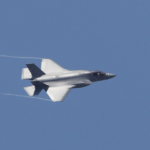
This article was first published in The Washington Examiner on July 11, 2023. Click Here to read the original article.
NATO leaders meeting in Vilnius, Lithuania, this week have a full agenda of issues critical to the alliance’s future, notably Russia’s continuing war in Ukraine. That war’s outcome, however, affects all now-independent states of the former Soviet Union, perhaps none more directly than Moldova.
Moldova’s geography alone should have made it a far higher NATO priority, particularly after the Kremlin’s unprovoked aggression against Kyiv. Straddling the Dniester River and surrounded by Romania and Ukraine, Moldova embodies one of the still-unresolved “frozen conflicts” that emerged in 1991 upon the USSR’s collapse. Soviet troops on the Dniester’s eastern bank tried to prevent Moldovan independence, engineering the pretend country of “Transnistria,” comprising the sliver of land between Moldova proper and southwestern Ukraine.
The continuing presence of Russian forces in Transnistria, and Moscow’s ill-concealed political and economic support to Communists and Russian sympathizers have been cancers on Moldova ever since. Worse, although remaining Russian forces in Transnistria are modest in numbers, the potential exists to substantially increase those forces, augmented with weapons, delivery systems, and surveillance capabilities endangering both Moldova and Ukraine.
Other frozen conflicts exist across the former Soviet Union, but the Ukraine war means that today none are more potentially dangerous to NATO members, current and prospective. Simply glancing at a map shows the risk of Russia outflanking hard-pressed Ukrainian troops from the West. And bomber forces, drones, or long-range artillery deployed in Moldova would enormously complicate NATO efforts to aid Kyiv resist Moscow’s hegemonic aspirations.
Bluntly put, Moldova has had difficulty getting Washington’s full attention for over thirty years.
For decades after the USSR’s breakup, internal Moldovan politics, compounded by persistent Kremlin interference, made it impossible for its citizens to make clear their desire to unify the country under a constitutional, representative government, free from Moscow’s meddling. Russian machinations continue today, along with the seemingly endemic corruption plaguing many post-Communist states.
Pro-Western Moldovans have focused their attention internationally on joining the European Union, relying on Romania and other Eastern Europeans for support. NATO has not featured in internal political debates, undoubtedly because of Russia’s presence in Transnistria and the Kremlin’s active measure in domestic politics. However, Maia Sandu, Moldova’s current President, is now better positioned to campaign for its politico-military security due to the ongoing hostilities next door. What Sandu and her supporters need are clear indications that NATO, especially Washington, is prepared to be active in ending the country’s frozen conflict.
Moldova’s problems might have been resolved earlier if NATO had seized George W. Bush’s April 2008, proposal to bring Ukraine and Georgia quickly into the Alliance. When Germany and France stymied Bush’s initiative, NATO implicitly confirmed the existence of several grey zones between NATO’s eastern border and Russia. These grey zones in eastern Europe, the Caucasus, and Central Asia allowed Russia to sustain existing frozen conflicts and create new ones (Georgia in 2008; Ukraine in 2014).
Had Ukraine joined NATO shortly after Bush’s proposal, there might never have been Russian aggression against it, in either 2014 or 2022. Finland’s and Sweden’s 2022 decisions to apply for NATO membership confirmed their realization that the only effective defense against Russia lay with joining the Alliance. Shielded behind Ukraine in NATO, Moldova might have resisted Russian political interference and escaped its frozen-conflict status.
That opportunity botched, today’s circumstances nonetheless provide a compelling reason for NATO itself to launch efforts to expel remaining Russian forces from Moldova and reduce Moscow’s political machinations, voluntarily or otherwise. As part of overall efforts to impose political and economic costs on Russia for invading Ukraine, reducing Russian influence elsewhere in the former Soviet Union should also be an objective. While Moscow’s remaining deployments in Transnistria and Transnistria’s own “military” are now small, the risk of those forces being augmented is considerable. The geostrategic reality for Moldova of Russian troops “behind” Ukrainian soldiers now engaged to the east adds compelling urgency to the West’s deliberations.
In Moldova, Moscow’s forces could be cut off from supplies fairly readily, given their separation from Russia, and other pressures could be brought to bear on Transnistria’s separatist authorities to accept a peaceful dissolution of their illegitimate government. Specific formulations to unwind Transnistria and transition to Moldova’s legitimate government may well prove complicated, but NATO need not now focus on the precise steps subsequently necessary. What we need from the Vilnius Summit is a determination to begin the process of closing out Moldova’s frozen conflict, removing Russian military forces, eliminating Russian political interference, and longer term, aiming for Moldovan NATO membership.
The key point is to act now before Moldova becomes a flashpoint, thereby also undermining Ukraine’s self-defense. Successfully pulling Moldova into the West would be a clear setback for Moscow, encouraging other former Soviet states that they, too, will not be left behind.
John Bolton served as national security adviser to President Donald Trump between 2018 and 2019. Between 2005 and 2006, he served as U.S. Ambassador to the United Nations.